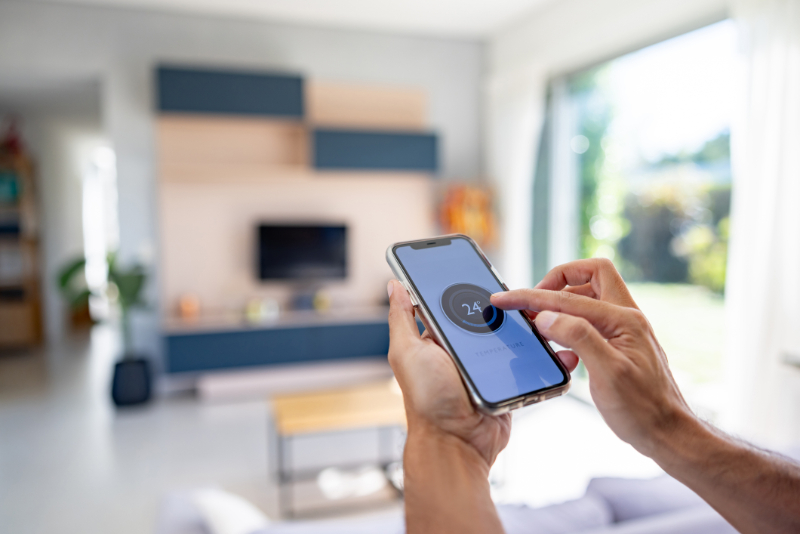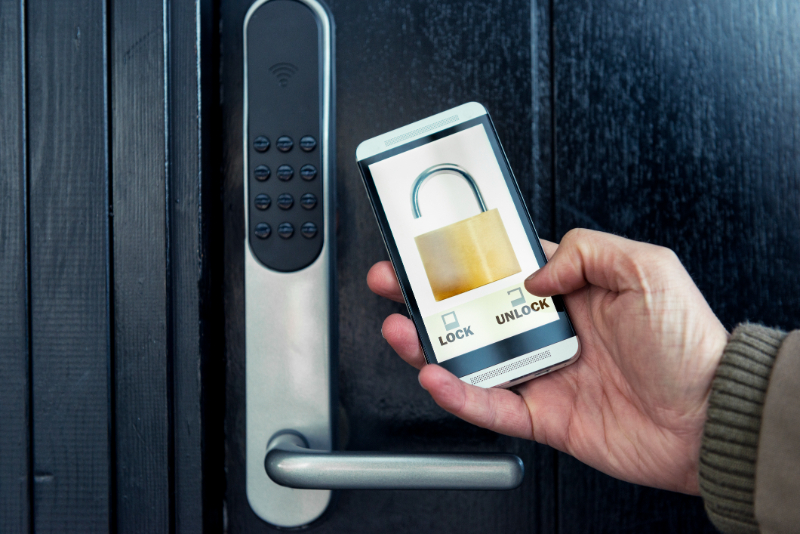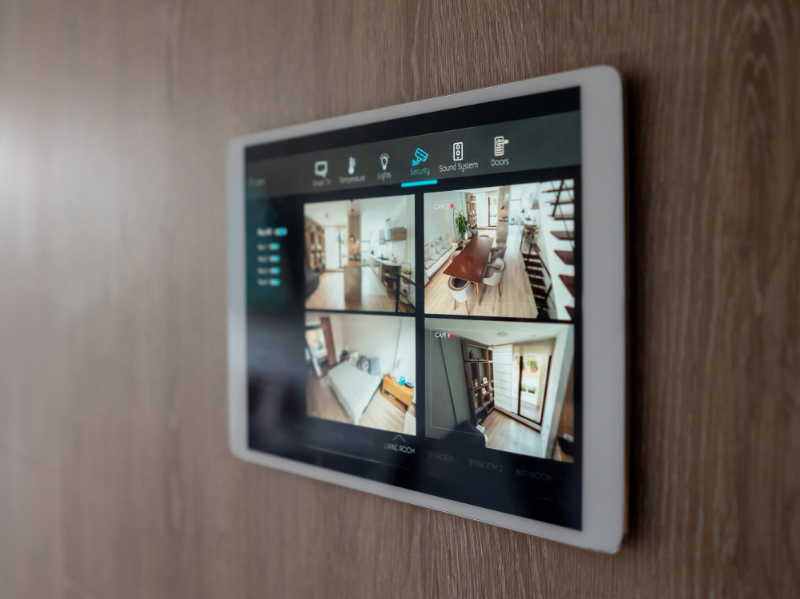Secure Your Smith Mountain Lake Home With Innovative Security Solutions

Owning a home in Smith Mountain Lake is all about enjoying luxurious tranquility, fantastic views, and having lots of fun. However, no place is exempt from security concerns. While violent crime in Smith Mountain Lake is virtually nonexistent, property crime can never be completely ruled out, even in the most affluent of areas. Protecting your home from burglary, larceny, car theft, and arson is just as important around Smith Mountain Lake as in any other community in the country.
Thankfully, securing your home is easier now with smart home technology becoming easier to install and operate. Smart systems are well-known for making living spaces more comfortable and suited to homeowners’ preferences. However, artificial intelligence (AI) and machine learning (ML) can also be leveraged to provide modern, innovative home security solutions that grant residents almost complete peace of mind compared to traditional security methods.
This article explores various aspects of smart home security. We’ll compare new smart systems with traditional ones, and discuss the considerations of implementing modern security methods to safeguard your Smith Mountain Lake home.
Table of Contents:
What is Smart Home Security Technology?
Smart home security refers to a range of interconnected devices that provide enhanced property protection. These innovative home systems leverage the internet and advanced sensors for real-time monitoring and alerts while enabling the homeowner to view and control the hardware remotely. This level of control and cohesiveness is what differentiates smart security systems from more traditional security methods.
Several devices and technologies designed to address different facets of home protection fall under smart home security. Everyday objects are made intelligent with advanced computing like AI and form a cohesive whole to form an internet of things (IoT) in your residence. Some common examples include cameras equipped with motion detection, internet-connected doorbells with video surveillance, and smart locks that can be controlled from anywhere in the world using an app.
While traditional home security methods have protected homes for generations, they are in no way foolproof and also fall short when compared to the convenience offered by Smart systems. Before talking about modern home security, let’s review how we used to secure our homes and see in what ways traditional methods can be improved.
What are the Limits of a Traditional Home Security System?

Traditional home security systems rely on basic physical and electronic measures to protect homes. These typically include door and window locks, burglar alarms, and surveillance cameras. While effective to a certain extent, they have several limitations that can be addressed by modern security systems.
A simple lock can be easily bypassed. Mechanical locks like deadbolts and padlocks have been traditionally used to close doors and windows, protecting homes from intruders. While a foundational component of home security, locks alone have several drawbacks. They require manual operation and are prone to human error. If the homeowner forgets to lock a window or door, the home’s security is severely compromised. If an intruder capable of cutting bolts breaches the inside of the home, there’s no way to alert the homeowner save for their own presence and attentiveness.
Alarm systems can deter intruders but can be disarmed. Alarms employ sensors, a control panel, and a loud siren to alert homeowners and deter intruders when the system detects a breach. However, smarter, more determined intruders who are familiar with the electronics of the alarm system can bypass them by locating and cutting their power supply. They are also more likely to be triggered by false threats than Smarter systems, requiring the owner to manually turn them off. Like other traditional methods, they are much less convenient and require the physical presence of the homeowner.
Surveillance cameras record 24/7, resulting in higher utility costs. Older CCTVs are usually standalone devices that need to be manually monitored. In a home setting, it’s practically impossible to be on CCTV standby duty all the time and the cameras are always recording. This results in a higher electricity bill and a shorter lifespan for the device. In contrast, smart cameras have motion detection and record only when atypical movements are detected in their field of view. When this happens, the homeowner receives an alert on their smartphone so they won’t have to constantly monitor what’s happening at home.
Now let’s see how modern, innovative home security is built on the foundational methods mentioned here while accounting for their shortcomings.
Types of Smart Home Security
A major theme of smart home security is its interconnectivity and how it fully leverages the internet to eliminate the demand for the resident’s physical presence. Modern systems provide real-time updates on the situation at home and enable residents to control their monitoring devices from anywhere in the world. Each system also has unique benefits that may not be as apparent at first glance.
Smart Cameras with Motion Detection
Motion-detecting cameras are designed to differentiate between normal activity and potential security threats. The motion sensors and camera work in tandem to monitor the environment. Both components are always running, but the camera only records if the difference in pixels between consecutive frames reaches a specific threshold.
Adjustable sensitivity to movement. The pixel difference these systems measure represents movements within the camera’s field of vision. Homeowners can adjust this setting to pick up larger or smaller movements. For instance, setting the sensitivity level to 50% may not record leaves flapping in the wind, but the recording feature will trigger when a person walks by within the field of view.
Long-term savings. These security systems save homeowners more money on their electric bills and data storage necessities compared to 24/7 surveillance because they significantly cut recording time. To minimize false alarms and save on utilities, consider what level of movement is normal in the camera’s environment. Fine-tune the sensitivity setting until only out-of-the-ordinary movements are recorded. Pre-set options are usually available making setup easy.
Connectivity and intelligence. The added intelligence of smart cameras adds so much more convenience and peace of mind. When the camera turns on, a notification is sent to the homeowner’s phone, allowing them to immediately view the recorded movement. More advanced models even have AI-powered facial recognition which adds one more layer of protection by identifying known and unknown persons. Overall, smart cameras with motion sensing technology are a must-have because they’re a handy, cost-effective cornerstone of modern home security.
Smart Doorbells with Video Surveillance
Smart doorbells are an efficient yet simple front-door security feature that’s become more available. One in five American households already have tech-integrated doorbells because they’re that useful.
Surveillance in a key security area. The front door is the area of the house that sees the most interaction with non-residents. As the threshold of the home, it’s where outsiders typically meet the homeowner and it’s also where everyone mainly enters and exits. Since package deliveries are also left here in the absence of the resident, these parcels are at risk of theft by porch pirates. Smart doorbells provide basic surveillance that can go a long way in preventing theft by opportunistic individuals.
Remote interaction and round-the-clock monitoring. Virtually all smart doorbell systems are equipped with a video camera (usually with a 1080p resolution), speaker, and microphone so that homeowners can see and communicate with visitors from behind their doors. They also have night vision, motion-sensing technology, and recording capability so they can provide valuable evidence in case of a security incident no matter the time of day.
Real-time, intelligent alerts. If the system detects significant movement, an app sends a smartphone alert to the homeowner. Much like smart cameras, more advanced smart doorbell systems have facial recognition.
Smart Locks with Remote Access

With smart locks, homeowners are less dependent on physical keys that may be lost or duplicated without their permission. They also enable homeowners to lock and unlock their doors from anywhere in the world. Instead of leaving a physical key under a potted plant for a family member who has lost their key, the homeowner can let them in with just a few taps on a screen.
Controlling home access in this way is extremely convenient for people who travel frequently, are away for most of the day, or rent out properties on platforms like Airbnb or HomeAway.
Customizable access. Some smart lock systems allow other keyless ways to enter the house for more effective visitor management. Homeowners can provide guests or service personnel with temporary access codes that can be easily removed or changed. The level of access can be customized in various ways as well. For instance, the whole system can be set up so that only specific areas of the home can be entered. Time and date restrictions can also be added for more control. This is particularly convenient when you’re expecting maintenance workers and caretakers to come in while you’re away.
Tracking real-time activity. One more advantage of smart lock technology is the ability to track guest activity in real-time, specifically the entering and exiting of the premises. This feature is especially useful for owners of rental properties and large homes that regularly receive many guests. The lock’s activity log is an additional layer of security for both the homeowner and the guest. For the owner, it ensures that guests check in and check out within the agreed times. For guests, the homeowner can inform them of any unauthorized access attempts while they’re away.
Integration with other innovative home security systems. Lastly, smart door locks can be integrated into a home surveillance ecosystem for enhanced monitoring and access control. For example, a smart doorbell in tandem with a smart lock allows the homeowner to confirm the identity of the people who will be entering the building before unlocking the front door using their smartphone. Smart lock technology simultaneously makes your home more accessible to those you trust and yet more secure.
Smart Sensors in Key Access Points

As an added blanket of security against break-ins, some homeowners install smart sensors on their windows and doors. These devices are triggered when the window or door is opened, closed, or tampered with. When this happens, they immediately send push notifications and alerts to the associated smartphone.
Multiple use cases and connectivity. These sensors aren’t only useful on doors and windows. They can be installed in any of the home’s important access points like the garage, inside file cabinets, and on pet doors. Like other home security systems, they’re compatible with other smart home technology like Google Home, Amazon Alexa, and Apple Home. With this integration, you can ask Google if your window has been opened or what the temperature is on your front porch.
Monitoring environmental conditions. Aside from movement, some sensors also measure environmental conditions like temperature, humidity, smoke, and carbon monoxide. Risk to property isn’t limited to human activity, so additional protection against fire and water damage is a handy feature to have in a 21st-century innovative home security system.
Smart Lighting Systems
Smart lights are a deterrent to potential intruders as they simulate occupancy. These systems can be programmed to turn the lights on and off at random intervals or controlled remotely via an app. They also synergize well with cameras by illuminating key security areas.
Security and comfort. Integration of smart lights with other home devices enhances both security and living spaces. Customization allows residents to adjust lighting scenes to enhance the ambiance and functionality of the home’s different spaces.
Smart Home Security Hubs
For houses with multiple smart security devices that don’t rely on WiFi, a security hub is essential. Hubs are network devices that serve as convergence points for data from several devices.
Full integration. Practically speaking, you can control all of your security devices through the hub’s app instead of using separate platforms to adjust your lighting, smart locks, etc. Here’s a cool everyday application of a smart home hub: with it, you can easily set up a protocol that automatically opens the front door, turns on the hallway lights, and plays your favorite music on the living room speaker as your smartphone reaches the front porch. This makes for a very pleasant welcome home.
Having an ecosystem of devices secures your home with comprehensive, intelligent coverage. There’s an even higher level to be reached in terms of adaptable, responsive protection as AI and ML(Machine learning)-powered home security becomes more advanced and accessible. They’re already applied in several security aspects like facial and voice recognition, identifying threatening vs. non-threatening subjects in surveillance footage and learning the patterns of the people living in the home.
Considerations for Implementation
While smart home security is an obvious step forward from traditional methods, there are a few things to consider before deciding to install a modern system in your home.
Budget
First and foremost, it’s important to learn the cost of integrating smart home security. With this information, you can establish a budget and select the devices that offer the best utility for your needs. Basic smart security packages that can be installed yourself can be as low as $200 while comprehensive, high-end systems that require professional installment cost around thousands.
Compatibility
Be sure that the devices you select can cross-talk seamlessly and integrate into your existing smart home ecosystem without too much hassle. Most devices run on either Z-Wave, Zigbee, Bluetooth, or WiFi. Communication issues arise when two devices run on different protocols but a smart home security hub solves this issue. Be extra mindful of device compatibility if you don’t plan on buying a central hub.
Privacy and Security
Thoroughly read the privacy policy of each smart device because each of them collects and transmits sensitive data. Choose reputable manufacturers and ensure that they have strong encryption algorithms and data protection measures.
Maintenance
Perhaps the biggest difference in the maintenance of smart home security devices vs. traditional home security is software updates. Aside from that, ensuring optimal performance is pretty similar and involves replacing batteries, periodically testing sensors, etc.
Protect your Smith Mountain Lake Home with Innovative Home Security
As a real estate broker, I understand that peace of mind is priceless, especially when you buy a home to cherish, like those found in Smith Lake Mountain. Modern security systems both enhance your living experience and safeguard your investment. Contact me today by calling 540.493.1690 or drop a message here to find homes around Smith Mountain Lake and discover the most effective home security measures in the area.





